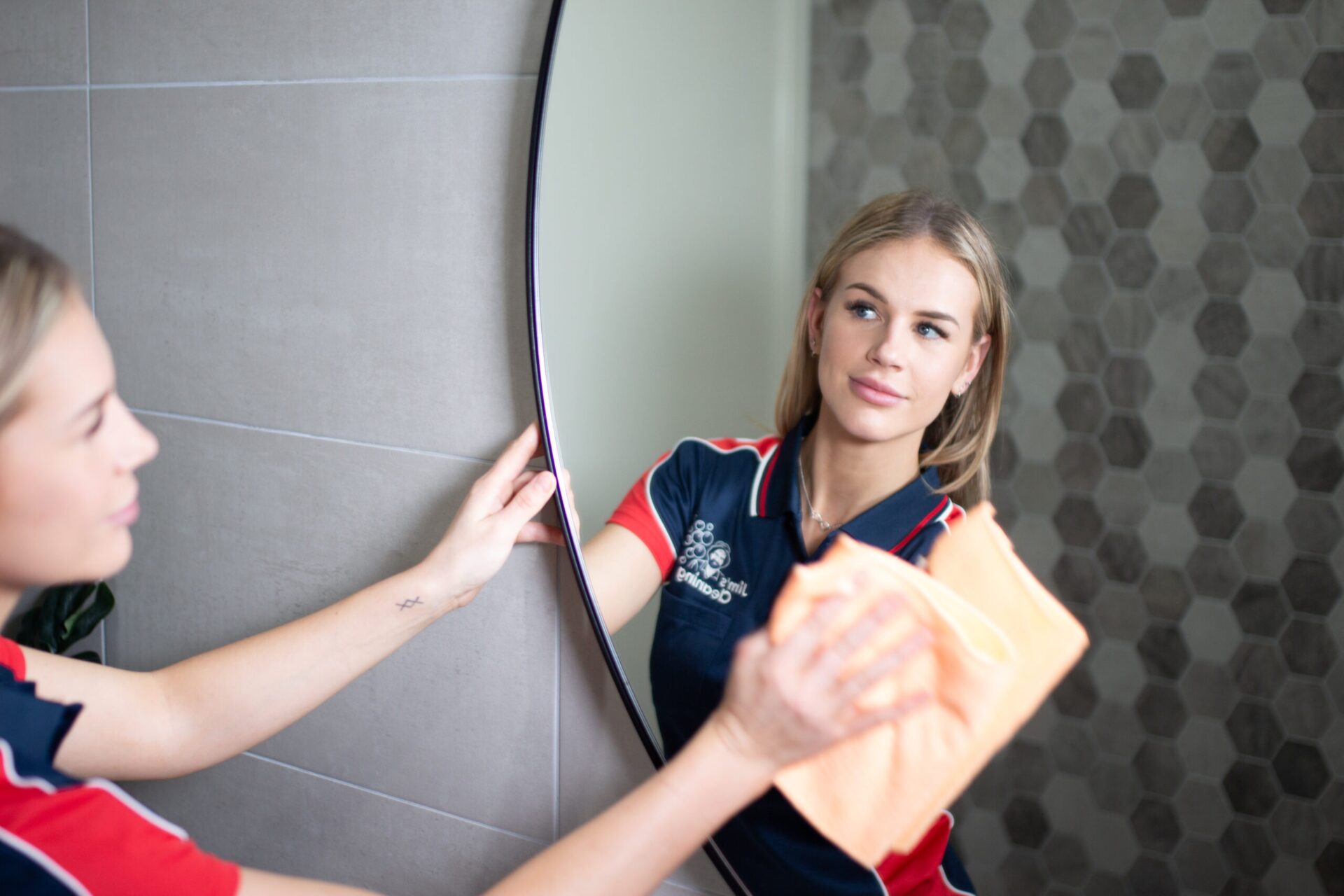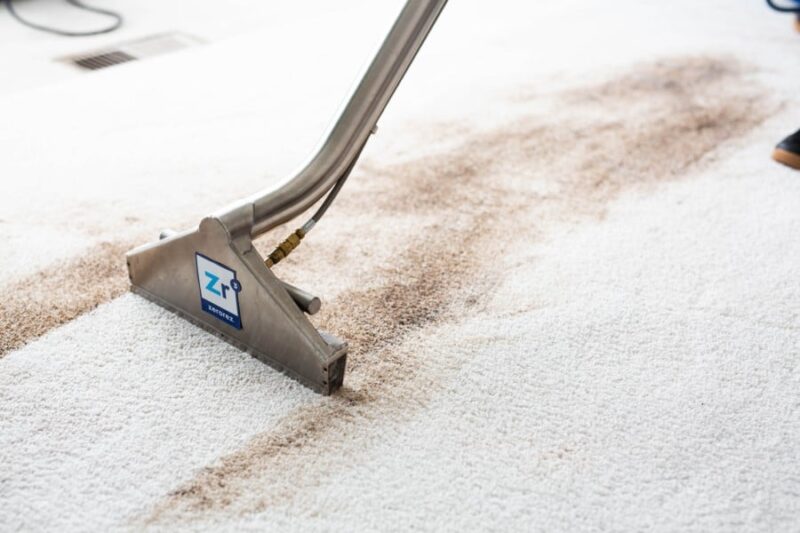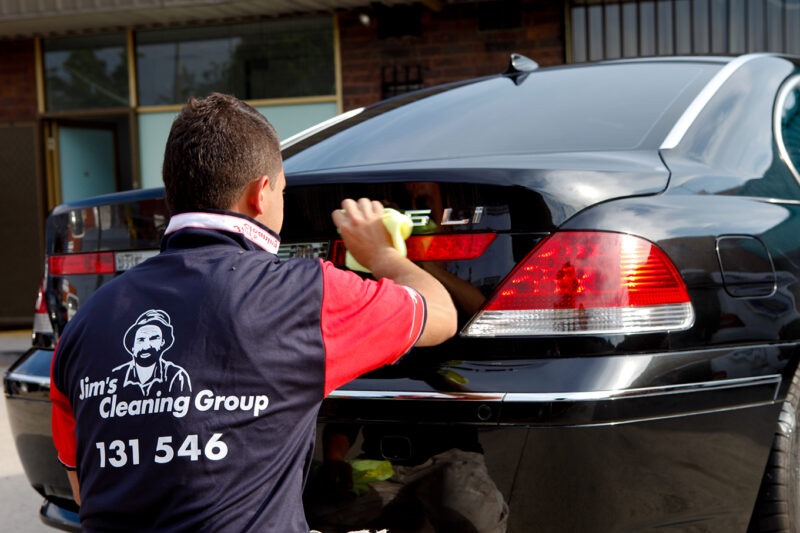How To Clean A Mirror

Mirrors are an essential part of our daily routines. A clean mirror can make a huge difference, whether it’s getting ready in the morning or a quick look before you head out the door. However, achieving a streak-free shine when cleaning mirrors can be tricky. In this guide, we’ll walk you through the best methods and products for a cleaner mirror.
Why cleaning mirrors is important
Beyond making it easier to check your reflection, a clean mirror can enhance a room’s lighting, making it feel brighter and more spacious. It also helps maintain good hygiene, as mirrors can accumulate dust, fingerprints and bacteria over time.
A dirty mirror can be distracting and frustrating, especially when you’re in a hurry. Smudges and streaks obstruct your view and create an impression of untidiness. Clean mirrors are also essential for businesses, especially the service industry, to create a professional and welcoming atmosphere for clients and customers.
Common mistakes to avoid when cleaning mirrors
Many people struggle with how to clean a mirror without leaving streaks or, worse, damaging the mirror. Here are a few pitfalls to avoid:
- Using the wrong cleaning products — Some products can leave residues or damage the mirror’s surface. Ammonia-based cleaners, for example, can be too harsh and may cause discolouration over time.
- Not drying the mirror properly — Leaving moisture on the mirror can lead to streaks and water spots. Ensure the mirror is completely dry to maintain a streak-free finish.
- Cleaning in direct sunlight — This can cause the cleaning solution to dry too quickly, leaving streaks. Always clean your mirrors in shaded or indoor areas to avoid this issue.
- Using abrasive materials — Sponges or rough cloths can scratch the mirror’s surface, leading to permanent damage. Stick to soft, non-abrasive materials for the best results.
A step-by-step guide for how to clean mirrors
1. Gather your supplies
Before you start cleaning, make sure you have all the necessary supplies. You will need:
- A microfibre cloth
- A glass cleaner or a vinegar-water solution
- Cotton swabs for the edges and corners
Having the right tools is half the battle. Microfibre cloths are particularly effective because they are designed to trap dirt and dust, ensuring a thorough mirror cleaning without scratching its surface.
2. Prepping the mirror
Start by dusting off the mirror with a dry microfibre cloth to remove any loose dirt or dust. Dust can be abrasive, so removing it beforehand ensures you’re not rubbing it into the mirror’s surface.
If your mirror has a frame, take a moment to dust it as well. Frames can accumulate dust and dirt, which can easily transfer to the mirror while cleaning.
3. Cleaning techniques
Spray your chosen mirror cleaning solution onto the microfibre cloth, not directly onto the mirror. This helps control the amount of liquid on the mirror and prevents the solution from dripping into the frame, which can cause damage over time.
Wipe the mirror in a zig-zag motion from top to bottom. This method helps prevent streaks and ensures you cover the entire surface. Make sure to overlap your strokes slightly to catch any missed spots.
For very large mirrors, it can be helpful to clean in sections. Divide the mirror into quadrants and clean one section at a time. This approach ensures thorough coverage without missing any areas.
4. Drying and buffing
After wiping down the mirror, use a dry section of the microfibre cloth or a new one to buff the mirror and remove any remaining moisture. This will remove residual streaks and add an extra shine to the mirror’s surface. If you notice any stubborn streaks, a final wipe with a clean, dry cloth should take care of them.
Commercial mirror cleaning products
There are many products available that can help you achieve a spotless mirror. Some of the best include:
- Commercial glass cleaners — These are specifically formulated to prevent streaks and leave a clear finish. Look for ammonia-free formulas to avoid harsh chemicals.
- Isopropyl alcohol — This can be used for tough spots and smudges. Alcohol evaporates quickly, helping to achieve a streak-free finish.
When choosing a cleaner, consider your mirror type and any specific cleaning needs. For example, antique mirrors may require gentler cleaning to preserve their integrity.
DIY mirror cleaning solutions
If you prefer a more natural approach, you can make your mirror-cleaning solutions at home. Here are a few recipes:
- Vinegar and water — Mix equal parts of white vinegar and water in a spray bottle. This solution is excellent for everyday cleaning and safe for most mirrors.
- Alcohol and water — Combine one part isopropyl alcohol with one part water. This solution is great for removing smudges and stubborn stains.
- Cornstarch and water — Add a tablespoon of cornstarch to a litre of water for an extra shine. This might sound unusual, but cornstarch can help polish the mirror’s surface.
How often should you clean your mirror?
The frequency of mirror cleaning depends on how often you use it and its exposure to dirt and grime. For most households, cleaning mirrors once a week is sufficient. You may need to clean mirrors more frequently in high-traffic areas or commercial spaces to maintain their clarity and shine.
If you have young children or pets, fingerprints and smudges may appear more often, necessitating more frequent cleanings. Similarly, bathroom mirrors may need more frequent attention due to steam and splashes from sinks.
Tackling stubborn stains and smudges
Even with regular cleaning, mirrors can develop stubborn stains and smudges that are hard to remove. Here’s how you can tackle these tough spots:
- Use isopropyl alcohol — Dab a small amount on a cotton ball and gently rub the stain to remove toothpaste splatters and other sticky residues.
- Baking soda paste — For particularly stubborn spots, Make a paste with baking soda and water. Apply it to the stain, let it sit for a few minutes, and then wipe it off with a damp cloth.
- Dedicated stain removers — Commercial products are designed specifically for tough stains on glass and mirrors. Follow the instructions on the product for best results.
If you encounter a stain that won’t budge, the mirror may need professional attention.
Cleaning mirrors in different rooms
Different rooms in your home may require different approaches to mirror cleaning based on their usage. Here’s how to handle mirrors in various areas:
Bathroom mirrors
Bathroom mirrors are often exposed to steam, toothpaste and other bathroom products. To keep them clean, you should:
- Ensure your bathroom is well-ventilated to reduce steam buildup.
- Use a microfibre cloth to wipe the mirror after each shower to prevent water spots.
- Once a week, use a glass cleaner or vinegar solution to clean your bathroom mirror thoroughly.
Bedroom and closet mirrors
These mirrors usually face less exposure to moisture but can accumulate dust and fingerprints. Here’s how to clean a mirror in your bedroom to ensure the best results:
- Dust regularly — Use a dry microfibre cloth to dust the mirrors regularly.
- Spot cleaning — For fingerprints and smudges, a quick wipe with a glass cleaner on a microfibre cloth should do the trick.
Living room and decorative mirrors
These mirrors often serve as decorative pieces and can become focal points in your decor. For a cleaner mirror, you should:
- Gently clean — Use a gentle glass cleaner and a soft cloth to avoid damaging decorative frames.
- Avoid harsh chemicals — Harsh chemicals can damage the mirror and its frame, so stick to mild cleaning solutions.
Book a professional mirror cleaning service with Jim’s Cleaning
If you prefer to leave your mirror cleaning to the professionals, Jim’s Cleaning offers expert services with fully trained and insured staff. Our police-checked team provides top-quality home and office cleaning services for Australian homes and businesses. Request a free quote from Jim’s Cleaning today to experience award-winning service and spotless results.



